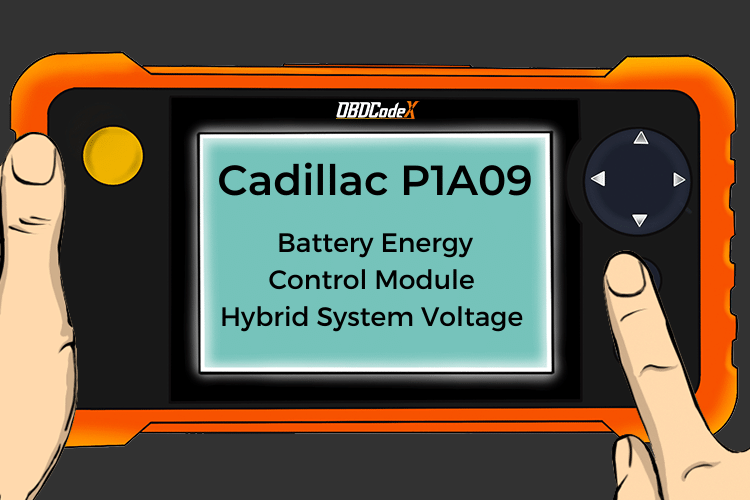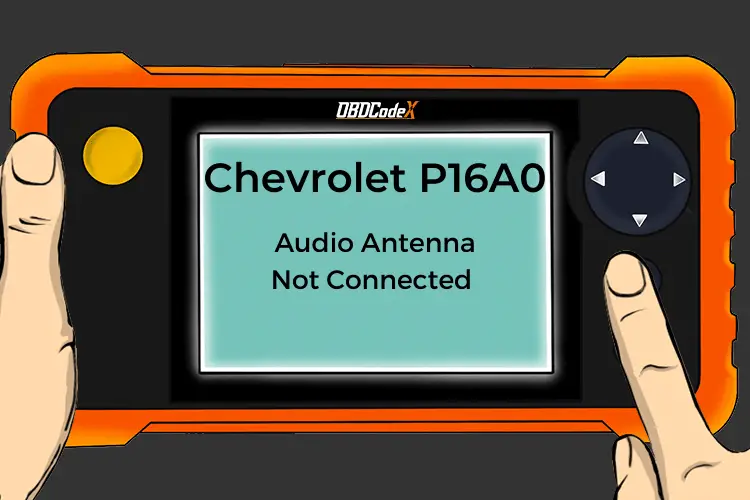P018E: Fuel Pressure Sensor B Circuit Intermittent/Erratic
Is your scanner showing P018E?
No worries. We'll show you what it means and how to deal with it.
P018E: Fuel Pressure Sensor B Circuit Intermittent/Erratic
OVERVIEWWhat Does The P018E Code Mean?
Most modern vehicles are equipped with a fuel pressure sensor (FPS). The FPS is one of the main inputs to the powertrain control module (PCM) for fuel pump and/or fuel injector control.
The fuel pressure sensor is a type of sensor called a transducer. This type of sensor varies its internal resistance in relation to pressure. The FPS is typically mounted to either the fuel rail or fuel line. Generally, there are three wires going to the FPS: reference, signal and ground. The sensor receives a reference voltage from the PCM (typically 5-volts) and sends back a return signal voltage that corresponds to fuel pressure.
In the case of this code, the “B” indicates the problem is with a portion of the system circuit, instead of a particular symptom or component.
Code P018E is set when the PCM detects an intermittent problem with the fuel pressure sensor. Related codes include P018A, P018B, P018C, and P018D.
What Are The Symptoms Of The P018E Code?
Symptoms of a P018E trouble code may include:
- Illuminated check engine light
- An engine that is hard to start or does not start
- Poor engine performance
What Are The Potential Causes Of The P018E Code?
Possible causes for this code may include:
- Faulty fuel pressure sensor
- Fuel delivery problems
- Wiring problems
- Faulty PCM
How Serious Is This P018E Code?
The severity of these codes is moderate to severe. In some cases, these codes can result in a vehicle that won’t start. It’s a good idea to address this code as soon as possible.
How Can You Fix The P018E Code?
Begin by checking the fuel pressure sensor and corresponding wiring. Look for loose connections, damaged wiring, etc. If damage is found, repair as necessary, clear the code and see if it returns. Next, check for technical service bulletins (TSBs) regarding the issue. If nothing is found, you will need to move forward to step by step diagnosis of the system.
The following is a generalized procedure, as testing for this code varies between vehicles. To accurately test the system, you’ll want to refer to the manufacture’s diagnostic flow chart.
Check the wiring
Before proceeding, you’ll want to consult the factory wiring diagrams to determine which wires are which. Autozone offers free online repair manuals for many vehicles and ALLDATA offers single vehicle subscriptions.
Check the reference voltage portion of the circuit
With the vehicle ignition on, use a digital multimeter set to DC volts to check for reference voltage (usually 5 volts) from the PCM. To do this, connect the negative meter lead to ground and the positive meter lead to the sensor B+ terminal on harness side of the connector. If no reference signal is present, connect the meter set to ohms (with the ignition off) between the reference voltage pin on the fuel pressure sensor and the reference voltage pin on the PCM. If the meter reads out of limits (OL) there is an open circuit between the PCM and sensor that will need to be located and repaired. If the meter reads a numeric value, there is continuity.
If everything is good up to this point, you’ll want to check that there is power coming out of the PCM. To do this, turn the ignition on and set the meter to DC volts. Connect the positive meter lead to the reference voltage terminal on the PCM and the negative lead to ground. If there is not a reference voltage from the PCM, the PCM is probably faulty. However, PCMs rarely go bad, so it’s a good idea to double check your work up to this point.
Check the ground portion of the circuit
With the vehicle ignition off, use a digital multimeter set to ohms to check for continuity to ground. Connect the meter between the fuel pressure sensor connector ground terminal and chassis ground. If the meter reads a numeric value, there is continuity. If the meter reads out of limits (OL) there is an open circuit between the PCM and sensor that will need to be located and repaired.
Check the return signal portion of the circuit
Turn the vehicle ignition off and turn your multimeter to the ohms setting. Connect one meter lead to the return signal terminal on the PCM and the other to the return terminal on the sensor connector. If the meter displays out of limits (OL), there is an open circuit between the PCM and sensor that must be repaired. If the meter reads a numeric value, there is continuity.
Check the fuel pressure sensor reading against actual fuel pressure
The testing done up to this point indicates that the fuel pressure sensor circuit is OK. Next, you’ll want to check the sensor itself against actual fuel pressure. To do this, start by attaching a mechanical fuel pressure gauge to the fuel rail. Next, connect a scan tool to the vehicle and select the FPS data parameter for viewing. Start the engine while simultaneously viewing both the actual fuel pressure and the FPS sensor data on the scan tool. If the readings aren’t within a couple of psi of one another, the sensor is faulty and should be replaced. If both readings are below the manufacture’s fuel pressure specifications, the FPS is not blame. Instead, there is likely a fuel delivery problem, such as a failed fuel pump, that will require diagnosis and repair.
Recommended Parts
Below are some recommended auto parts to help you address the trouble code affecting your vehicle and get it running smoothly again:
>>> CBK Fuel Pressure Sensor
>>> Twippo 372Pcs Waterproof Wire Connectors Kit
>>> ECU
>>> KAIWEETS Digital Multimeter
Note: During the purchasing process, please check carefully whether the part you want to buy fits your car!
Reference Sources
P018E: Fuel Pressure Sensor B Circuit Intermittent, OBD-Codes.




